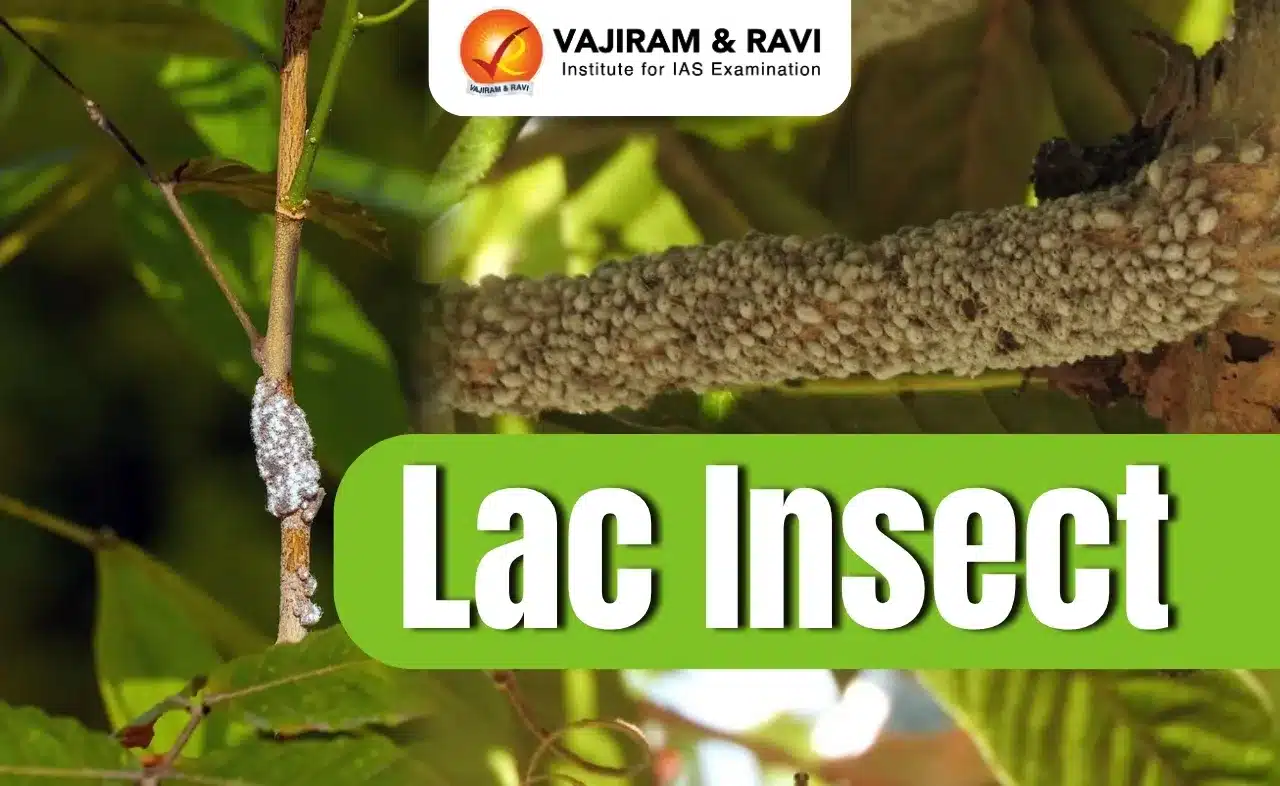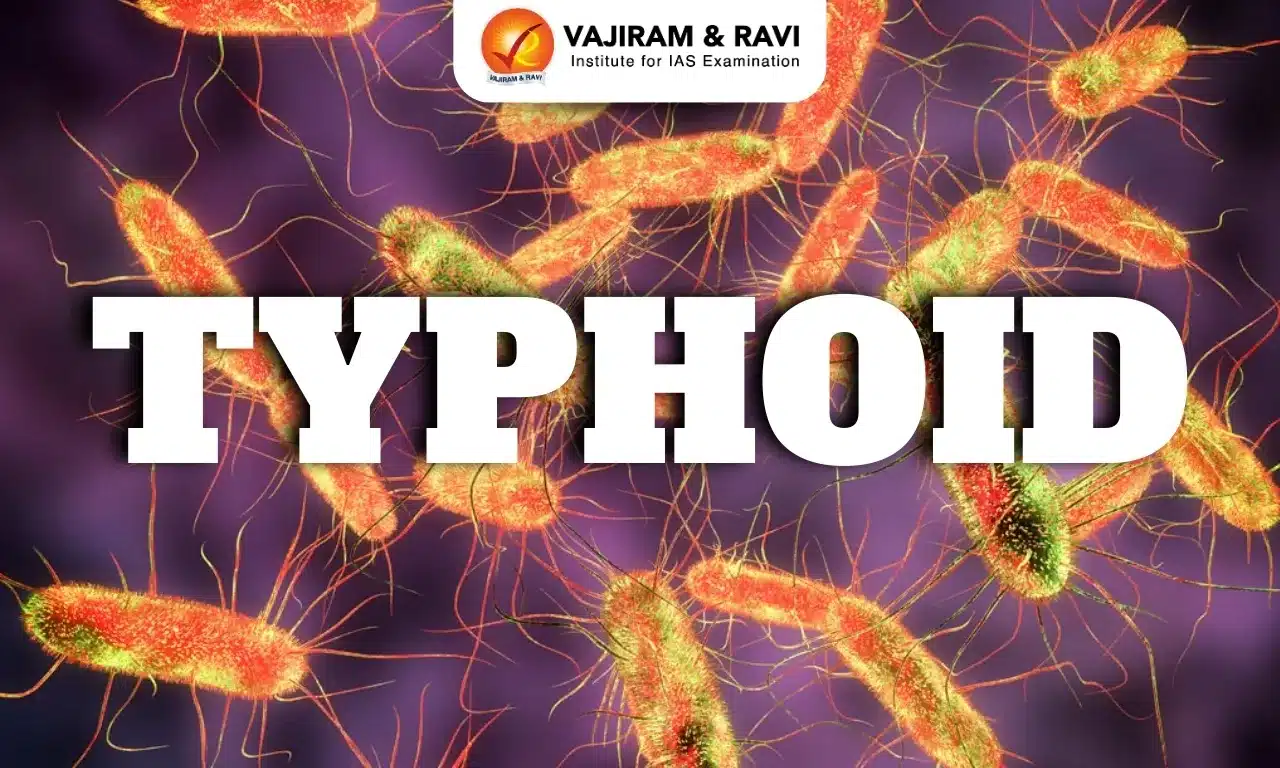Lac Insect Latest News
In a new study, researchers at the Indian Institute of Science (IISc) have unravelled the mystery behind how the lac insect produces laccaic acid that is used to make lac pigment.
About Lac Insect
- It is hemimetabolous i.e. it undergoes gradual metamorphosis.
- The main stages of lac insect life cycle are egg, nymph instars, pupa and adult.
- The lac insects show an ovoviviparous reproduction. The life cycle is completed in about six months.
- Lac insects live in cavities or cells made in the resin or lac secreted by them on their host plant.
- The lac insect grows on certain trees (like the flame of the forest), drinks its sugary sap, and secretes a sticky resin called shellac.
- It also makes a bright red compound called laccaic acid, which is used to make the pigment.
- In India, mainly there are two distinct strains of Lac insect: kusumi and rangeeni.
- Lac insects have six genera from which only five can secrete lac, but commercial lac can be secreted by only one, i.e. Laccifer.
- The commonest and most widely occurring species of lac insect in India is Laccifer lacca
- Distribution: The lac insects are distributed in South-East Asian countries like India, Thailand, Malaya, Lao Myanmar, and Yuan province of China.
- Among these countries India and Thailand are the main lacs producing areas in the world.
- In India over 90% of lac produced comes from the states of Bihar, Jharkhand, West Bengal, Madhya Pradesh, Chhattisgarh, Eastern Maharashtra and northern Orissa.
- Uses of Lac pigment: The lac pigment is a prized commodity used in food colouring, textiles, dyes, handicrafts, and folk art.
Highlights of the Research
- Researchers have found that the colourful pigment extracted from the lac insect may actually be produced by a symbiotic yeast-like organism living inside the insect.
- One of the key ingredients required for laccaic acid synthesis is an amino acid called tyrosine, which the insect cannot make on its own or source from the tree sap.
- Such missing ingredients are usually supplied by symbiotic bacteria or fungi that live inside insect bodies and secrete these molecules in exchange for housing.
- The fungus is actually inside the insect’s oocyte (egg cell).
- The fungus floats around in the insect’s haemolymph — the equivalent of animal blood — and as soon as the oocyte matures, it latches on to it and enters the oocyte, and gets transmitted to the offspring that emerges from the oocyte.
Source: TH
Last updated on January, 2026
→ Check out the latest UPSC Syllabus 2026 here.
→ Join Vajiram & Ravi’s Interview Guidance Programme for expert help to crack your final UPSC stage.
→ UPSC Mains Result 2025 is now out.
→ UPSC Notification 2026 is scheduled to be released on January 14, 2026.
→ UPSC Calendar 2026 is released on 15th May, 2025.
→ UPSC Prelims 2026 will be conducted on 24th May, 2026 & UPSC Mains 2026 will be conducted on 21st August 2026.
→ The UPSC Selection Process is of 3 stages-Prelims, Mains and Interview.
→ Prepare effectively with Vajiram & Ravi’s UPSC Prelims Test Series 2026 featuring full-length mock tests, detailed solutions, and performance analysis.
→ Enroll in Vajiram & Ravi’s UPSC Mains Test Series 2026 for structured answer writing practice, expert evaluation, and exam-oriented feedback.
→ Join Vajiram & Ravi’s Best UPSC Mentorship Program for personalized guidance, strategy planning, and one-to-one support from experienced mentors.
→ UPSC Result 2024 is released with latest UPSC Marksheet 2024. Check Now!
→ UPSC Toppers List 2024 is released now. Shakti Dubey is UPSC AIR 1 2024 Topper.
→ Also check Best UPSC Coaching in India
Lac Insect FAQs
Q1. Which state is the largest producer of lac in India?+
Q2. Which is the major host plant of lac insect in India?+
Q3. What are the applications of lac?+
Tags: lac insect prelims pointers upsc current affairs upsc prelims current affairs

















